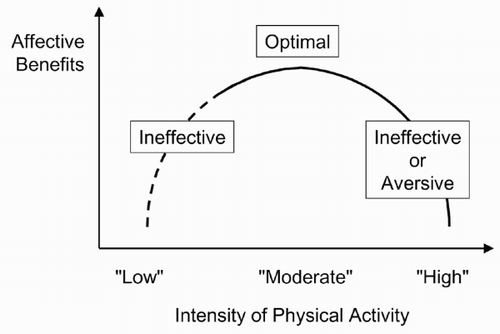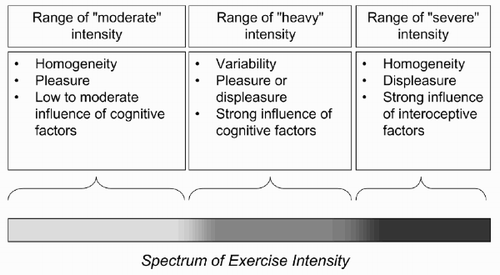Figures & data
Figure 1. The inverted-J (solid part of the line) and inverted-U hypotheses of the relationship between the intensity of physical activity and affective benefits. An intensity that is “too low” is believed to be ineffective in producing significant affective benefits, whereas an intensity that is “too high” may be ineffective or aversive. An intensity approximating 60 – 70% of maximal aerobic capacity (i.e. not “too low” and not “too high”) is believed to provide the optimal stimulus for positive affective changes.

Figure 2. An alternative dose – response model based on the three-domain typology of physical activity intensity. Within the moderate domain of intensity, there is a trend towards homogeneously positive affective changes. At intensities that approximate the heavy domain, variability emerges, with some individuals reporting changes towards pleasure and some reporting changes towards displeasure. Within the severe domain of intensity, the affective changes tend to be homogeneously negative. See text for definitions of the three intensity domains.
